Art - Picture Books - Comics - Graphic Novels - Manga - Mutli Media - Tool box
- Introduction
- Elements of visual art
- Five Visual Arts Approaches to Critically Evaluate Visual Images
- Picture book critique ideas
- Suggested books to critique
- Drawing emotions in comics & graphic novels
- Scott McCloud's comments on the power of images and words to communicate and how different kinds of media is and isn't accepted
- Best resources to make, understand, & study comics
- Where's Waldo 25 years page
- Historical science fiction Sunday edition comic - 1950's
- Annotated list of Graphic Novels
- Manga history
Introduction
The page includes tools to understand and analyze picture books, comics, graphic novels, manga, and other visual media with graphics, images, pictures, and illustrations.
It includes elements of visual art, five historical approaces to critically evaluate visual images, ideas to critique picture books, suggested picture books to critique, Scott McCloud's comments on the power of images and words to communicate and how different kinds of media is and isn't accepted. Best resources to make, understand, and study comics. Drawing emotions in comics & graphic novels. Marvel Database characters, comics, events, discussion. History of Manga. And a list of graphic novels.
Elements of visual art
Line is the path of a moving point through space. It may indicate direction, texture, coutours, or movement.
Shape is the area enclosed by a line or other shapes. Shapes may be geometric (triangle, rectangle, circle...) or have an organic or natural character (trees, leaves, rocks, puddles...).
Color is defined by hue, value, and intensity. It is the range of visual light in the spectrum and properties of the pigments used in making visual art.
- Hue is the name given to different wave lengths of light from the visual spectrum.
- Value is the degree of lightness or darkness.
- Intensity is the amount of pigment or saturation. The bright a color the more pigment it contains.
Form is three dimensional (length, height, and depth of volume) shapes.
Space is the area occupied by an object or the area formed by the absence of an object(s).
Rhythm is patterned organization of colors, lines, textures, or combinations of art elements that create a pleasing effect. A visual rhythm will lead the eye from one area to another in a rhthmical and orderly manner.
Balance is the perception of equilibrium between the elements in the piece of art.
Emphasis is the focal point of interest in a piece created by accenting or exaggerating a specific area or art element to create greater interest.
Contrast is the comparison of two elements that appear different (values of light and dark, hues...). Strong contrasts are the most disimilar examples of an art element (dark - light, black - white).
Unity is the perception of the parts of a piece and their relationship with the dominant or unifying element.
Chiaroscuro technique of using light and shade/ dark in art/ pictorial representationi (see The Tale of Despereaux).
Five Visual Arts Approaches to Critically Evaluate Visual Images
| Visual Arts Approach | Percieving | Interpreting | Evaluating | Connecting |
|---|---|---|---|---|
| Technical and creative |
|
|
|
|
| Creative |
|
|
|
|
| Cultural and historical |
|
|
|
|
| Critical approach |
|
|
|
|
| Aesthetic approach |
|
|
|
|
Picture book Critique Ideas
Book Title
Author
Illustrator
What makes it interesting or boring?
What makes the plot interesting or boring?
What makes the main character interesting or not interesting?
Why do you think the author wrote the book?
Did the author's story achieve the purpose?
Why do you think the art or pictures in the book helped the story or not?
Is there a picture or piece of art in the book that
you would hang on your wall?
Why or why not?
How did or didn't the art or pictures in the book make the story more
interesting or understandable?
Would you read another book by the author?
Why or why not?
Would you look for another book that was illustrated
by the illustrator?
Why or why not?
What kind of people do you think is the target audience? Age, gender, other?
Suggested picture books to critique
King Bob's New Clothes - illustrations dramatic expreessions on people's faces. Contrast of the color different when in story or outside of story... Pastels or more realistic
The Three Pigs - pigs escape the story and help others characters from other stories Wiesner
Chicka Chicka Boom Boom - illustrations bright colorful; Border, balance tree in middle, tree straight and then bend as letter go up tree and then back straight.
Brown Bear, Brown Bear... Colors of animal take up most space, very little white.
The Mixed Up Chameleon - Eric Carle torn paper message to be yourself use of colors to illustrate all the differences as different parts are added...
John Jeremy Coulton - Color when talk about John J C and when talk about the people of the community it was black and white. Good lesson.
Bill and Pete - toothbrush - bird write name William can't so becomes Bill. Comic bookie, rhythm and if something unexpected happens then balance is gone...
Leo the Late Blooomer - good lesson to it Leo couldn't write or read and then one day could. pictures bright, realistic, and book predictable; shape geometric circles in snowman, rectangle... color... many different... contrast number one side and picture on other, border on the entire page.
The Water Hole - Shows hole with hole in page and the hole dries up as go through the book and then rains at the end. Perspective everything going to the water hole..
Alexander and the Horrible no good very bad day - Frustrated because of bad day, Was black and white contrast with shading, value degree of light and dark, lines great variety...
Eve and Smithy - friendship and neighborly give a gift of what had - cap - doesn't have to be expensive. Color each shape is defined by unique color characters were defined by
Trouble with Trolls - take a dog up the mountain and Trolls keep stealing the dog and has to give a piece of clothes to get dog back. Problem solving, Colors of land - earth tones, Jan Brett three different pictures of Trolls hidden on every page - in realistic depictions of fantasy.
Can you .... I Can, Can You - Eric Carle. Vibrant colors depict actions with animals. Children can do the actions that the characters in the book do.
Stella Luna - pictures tell a story without the text. Fantastic illustrations, multicultural message that we can all live together. Text does fit with the illustrations. Form kind of three dimensional, soft colors, unity of independent pictures unite a story.
Comics and the Rise to Adult
The following excert from Understanding Comics The Invisible Art by Scott Mc Cloud 1993. is an example of how comics have been stereotyped as a lowly genre, when in fact there are different qualities of comics just as there are different qualities of fiction. I have fallen prey to this stereotype initiated by my teachers over the years. But I have overcome my bias and now recognize there are quality comics. And am particularly delighted comics have evolved and acquired a new name - the graphic novel, which undoubtably is a marketing ploy.
Two, graphic novesl, that I would highly recommend are first - Artemis Fowl: The Graphic Novel by Eoin Colfer and Andrew Donkin 2007 for the upper elementary or middle school level. And second - Babymouse Queen of the World by Jennifer L. Holm & Matthew Holm 2005 for lower elementary.
Oh and getting back to Scott's book. I highly recommend it. I was enthralled with his presentation of different ways to understand and explain comics, their history, and the differences between comics in Western and Eastern cultures. A 215 page history and philosophy of comics in a comic book.
The following excert hammers home the present separation of textual and visual communication in our "school" culture and an often bias of textual presentation over visual presentation.
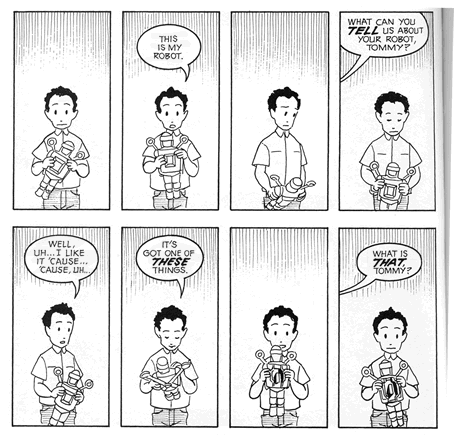
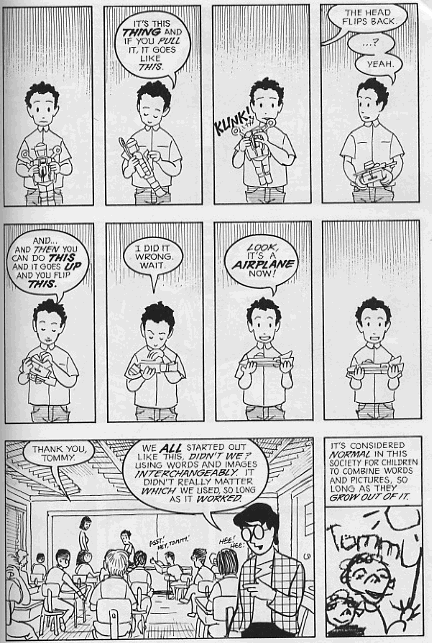
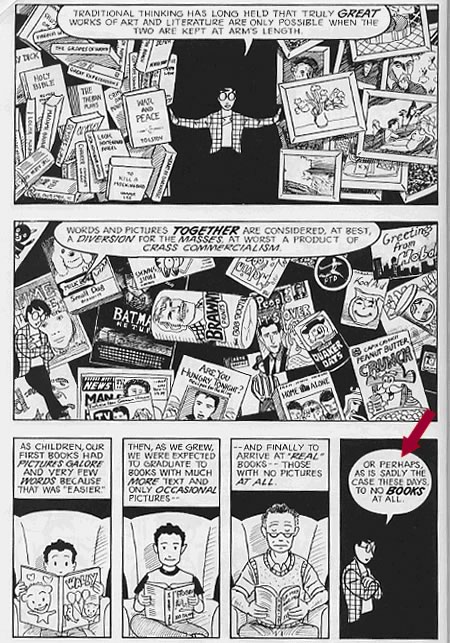
Arrow added for emphasis!
Drawing emotions - Notes from Scott McCloud - Understanding Comics
Making comics and drawing emotions!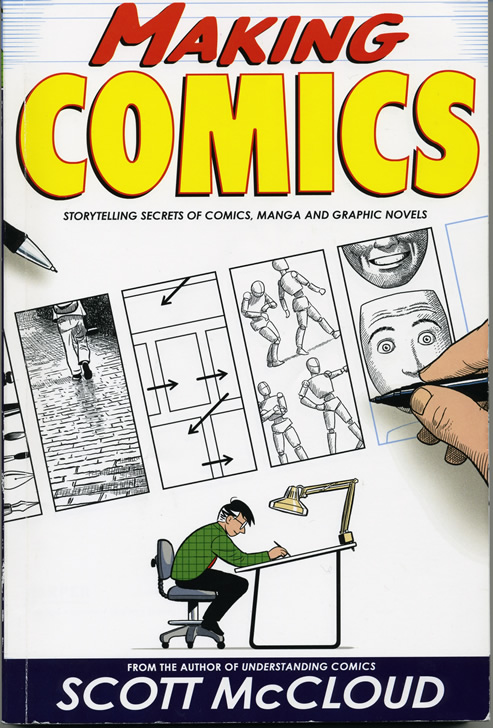
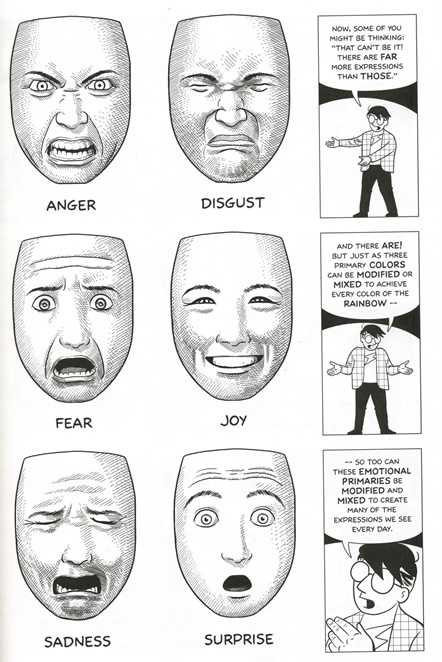
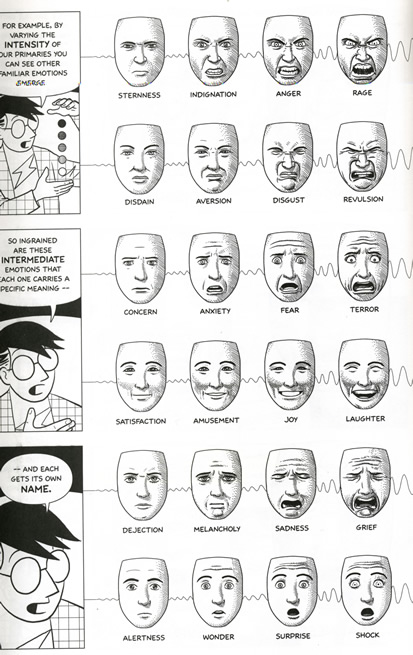
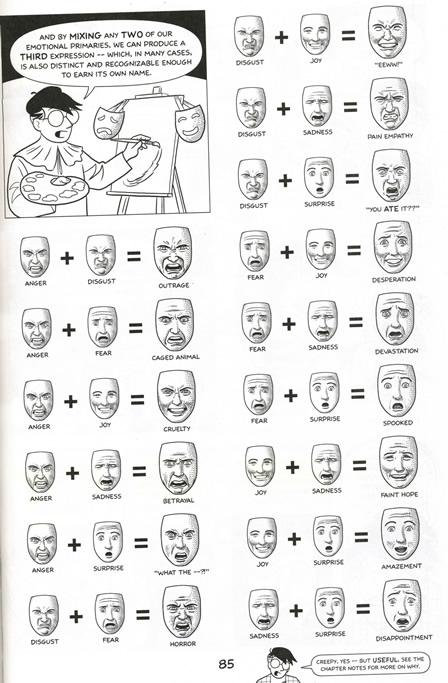
Consider these books - to Enjoy and be amazed!
25 Year - Where's Waldo? - Anniversary Page in Newsweek 9/15/12
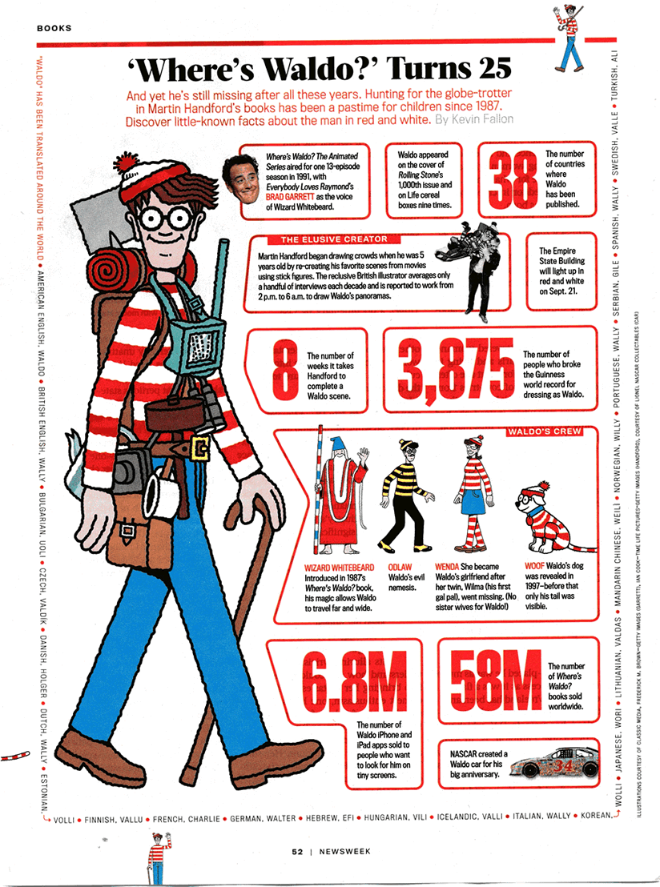
Best Sources for Making and Understanding Comics
Comics - one picture after another to show the passage of time. Scott McCloud
Scott McCloud
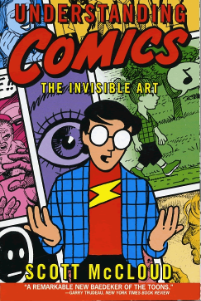
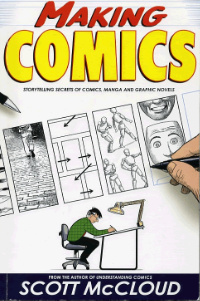
Understanding Comics and Making Comics are two of the best sources for comics:
Understanding Comics: The Invisible Art, by Scott McCloud - describes what comics are about and how they have evolved.
Making Comics: Storytelling Secrets of Comics, Manga and Graphic Novels , by Scott McCloud - Describes how to make comics. However, even if you aren't motivated to make comics you can learn a lot about interpreting comics by looking and reading this book.
James Sturm, Andrew Arnold, & Alexis Frederick-Frost
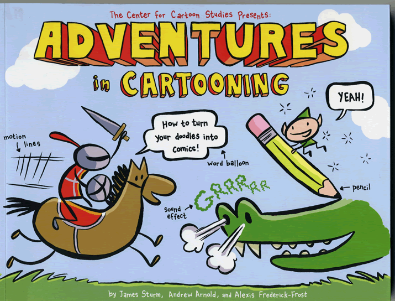
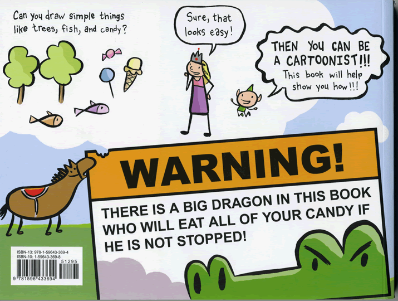
Adventures in Cartooning is an interesting and entertaining story within the story of how to create a comic. Should inspire children who want to creat comics and privide easy to follow and simple suggestions on how to begin cartooning.
Reinventing Comics by Scott McCloud
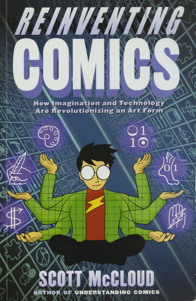
Reinventing Comics (2000 - post web creation) 256 pages. Black and White comic book is a sequel of Understanding and Making Comics that describes comics and technology. It examines comics as a form of art, communication, and technology and uses 12 revolutions to analyze the way comics are created, distributed and perceived; with special emphasis on the potential of electronics related to comics.
Part One Reviews comics characteristics as related to 9 revolutions with significant historical examples from classic. Characteristics include: comics as art and literature, creator's rights, industry innovation, public perception, institutional scrutiny, gender balance, minority representation, and diversity of genre.
Part Two explores comics in relation three more revolutions based on the new 2000 era technology: digital production, digital distribution, and design challenges of comics in a digital environment.
While decades of time usually makes digital technology information outdated, the philosophical big ideas and historical nature of the writing makes it suprisingly still appropriate and beneficial for the information included.
More about - Scott
Will Eisner
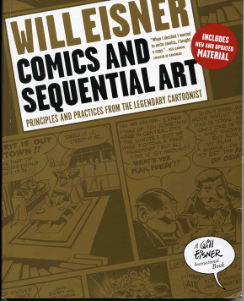
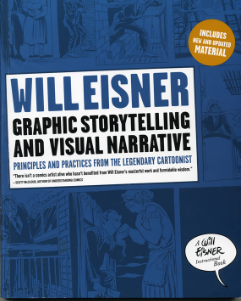
Here are two historical first sources for comics and graphic storytelling:
Graphic Storytelling and Visual Narrative: Principles and Practices from the Legendary Cartoonist - Will masterly describes what comics are about and how they have evolved.
Comics and Sequential Art: Principles and Practices from the Legendary Cartoonist. - Will describes principles and practices about graphic storytelling and visual narratives.
Historical science fiction Sunday edition comic - 1950's
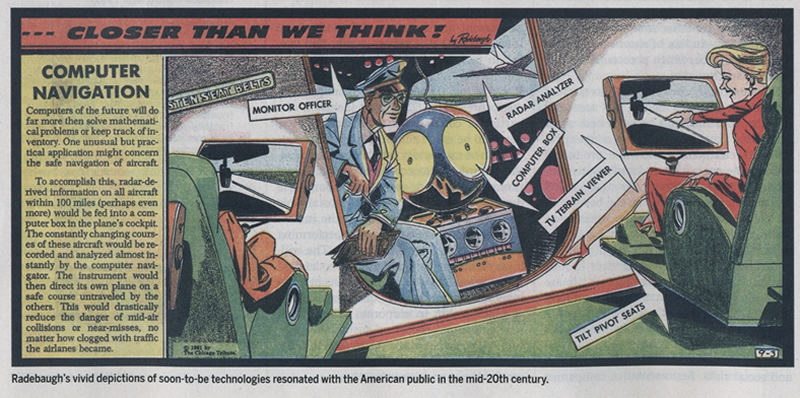
More resources
- My annotated list of Graphic Novels
- Manga history
- Marvel Database characters, comics, events, discussion, and more